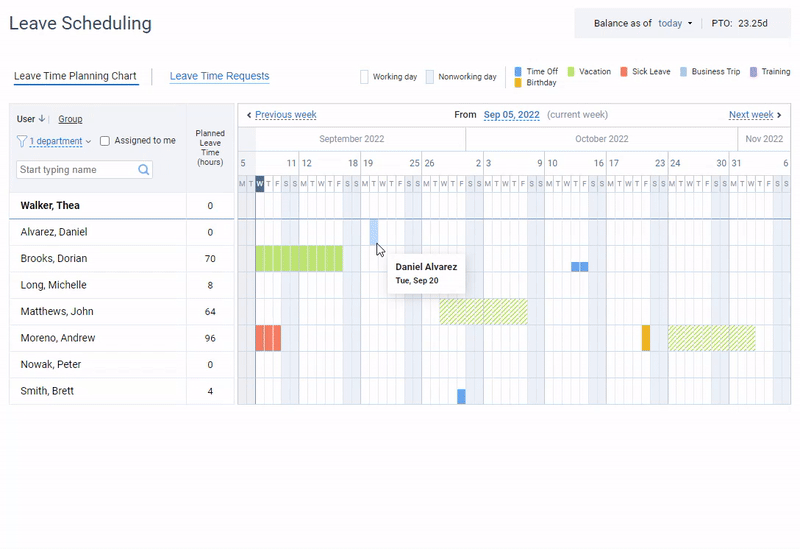With the COVID-19 pandemic and massive switch to home offices, businesses had to accommodate and introduce many new forms of employment and types of working schedules.
While everyone has heard of part time, which is a rather standard form of employment, employers and employees still have questions about how many hours is considered part time or what work schedules are available for part-time workers. These are the exact questions that we cover further on in the article – read on to find out.

What Is Part Time?
Part time is a form of employment that requires employees to work fewer hours per week than a full-time job with the standard 40-hour work week.
Most common reasons why employees choose part-time job:
- to get a degree or complete a training
- to take care of a child, a family member or carry out family responsibilities
- to have more spare time for hobbies and interests
- to launch a business while still earning an income.
Most common reasons why businesses offer part-time positions:
- to save costs: part-time employees are less expensive
- to be flexible: part-time employees allow businesses to manage changing workloads with more grace
- to build diverse teams: they perform better than homogenous teams
- to increase employee retention: employees who choose a part-time job due to family reasons are more likely to stick.
Legal definitions of part time
In most countries, there are no legal guidelines for part-time jobs and the range of required working hours. That’s why businesses and employees need to check with local laws and policies of particular companies. Read on to learn legal requirements and limitations regarding part time jobs in different countries.
Company policy definitions of part time
As long as most state and country laws are not clear about part-time jobs, the number of working hours required and intricacies regarding managing part-time positions, companies have to define the details of part-time employment in their company policies.
For example, Amazon offers three categories of employment: part-time workers work 20-29 hours; reduced-time employees work 30-39 hours; and full-time employees work 40 or more hours per week.
How Many Hours Is Part Time?
The number of hours at part-time positions differs across countries. Let’s see what jobs are considered as part-time positions in the US, the UK, Canada and Australia.
In the United States
In the US, there are no clear-cut laws or policies defining the number of working hours on part-time positions. The key federal sources give the following definitions of part time:
- The Fair Labor Standards Act (FLSA) doesn’t define part-time employment and offers employers to determine the details.
- According to the Internal Revenue Service (IRS), part-time employees work from 16 to 32 hours per week. This applies only to businesses that are subject to the Affordable Care Act, which is any employer that has 50 or more full-time employees.
- The U.S. Bureau of Labor Statistics defines part-time workers as those who usually are on the job between 1 and 34 hours per week. However, this definition is used for statistical purposes only.
So, part time in the US is described as any time between one and 34 hours of work per week. It’s up to employers to decide how many hours a part-time worker is allowed to work.
In the United Kingdom
The UK government provides no specific range of working hours for part-time workers but states that they work less than full-time workers, meaning less than 35 hours a week.
In Canada
In Canada, the Canada Labour Code doesn’t define the number of working hours at part-time positions. The Canadian Council on Social Development (CCSD) considers 30 hours per week as part-time.
In Australia
The Australian Bureau of Statistics (ABS) considers part-time jobs to be less than 35 hours a week.
Part-Time Job Work Schedules
In most countries, part-time jobs take less than 35 hours per week. But these hours are not necessarily spread across the standard Monday to Friday schedule. Here are some of the most common examples of part-time work schedules.
Fixed part-time
A fixed part-time schedule is a schedule with fixed start and end work hours, which remains the same each day and week.
Example: A company’s business hours are from 8 a.m. to 8 p.m. A part-time worker with a fixed schedule works from 10 a.m. to 4 p.m Monday to Friday.
Unpredictable part-time
Unpredictable part-time schedule is a work schedule with no fixed working hours. One day a part-time employee works 4 hours and 6 hours the next day.
Example: The employer requires a part-time worker to show up at work from 10 a.m. to 3 p.m. Next week, they change the schedule to 9 a.m. to 2 p.m.
Flextime
A flextime schedule defines required working hours and allows employees to choose the rest of their working hours.
Example: The employer requires a part-time worker to be available online during the busy hours from 12 p.m to 2 p.m. and work the rest of their daily working hours whenever they wish.
Compressed workweek
A compressed workweek schedule allows employees to work less than standard 5 days a week. Instead of working Monday to Friday, employees are allowed to work Monday to Thursday or have a day off in the middle of the week, but only if they work the required number of hours during the week.
Example: A part-time employee is required to work 20 hours per week. Instead of working for 4 hours Monday to Friday, they are allowed to work 4 days for 5 hours and have a day off.
Job share
Job sharing is when a full-time schedule of a standard employee is split between two part-time workers.
Example: A standard full-time employee works from 9 a.m. to 5 p.m from Monday to Friday. Two part-time employees work a job share schedule where one works from 9 a.m. to 1 p.m. and the other works from 1 p.m. to 5 p.m, both – from Monday to Friday.
How To Manage Part Time Employees?
Tracking working time and attendance of part-time employees can be a true headache, especially if they work flexible hours. Luckily, the software market offers time and attendance systems where employees can register their attendance.
For example, in actiPLANS, your full-time and part-time employees can register their attendance, notify others of working from home, running late or leaving early. All this data is displayed in an online team calendar and a free mobile app.

Leave management in actiPLANS – create an unlimited number of leave types, get your team to request and plan their time off and review employee availability
More than that, you can integrate actiPLANS with actiTIME to assign tasks and allow your employees to record time against them and be aware how much time your employees spent at work down to the minute. Try actiPLANS for free with a 30-day trial (no credit card required).



